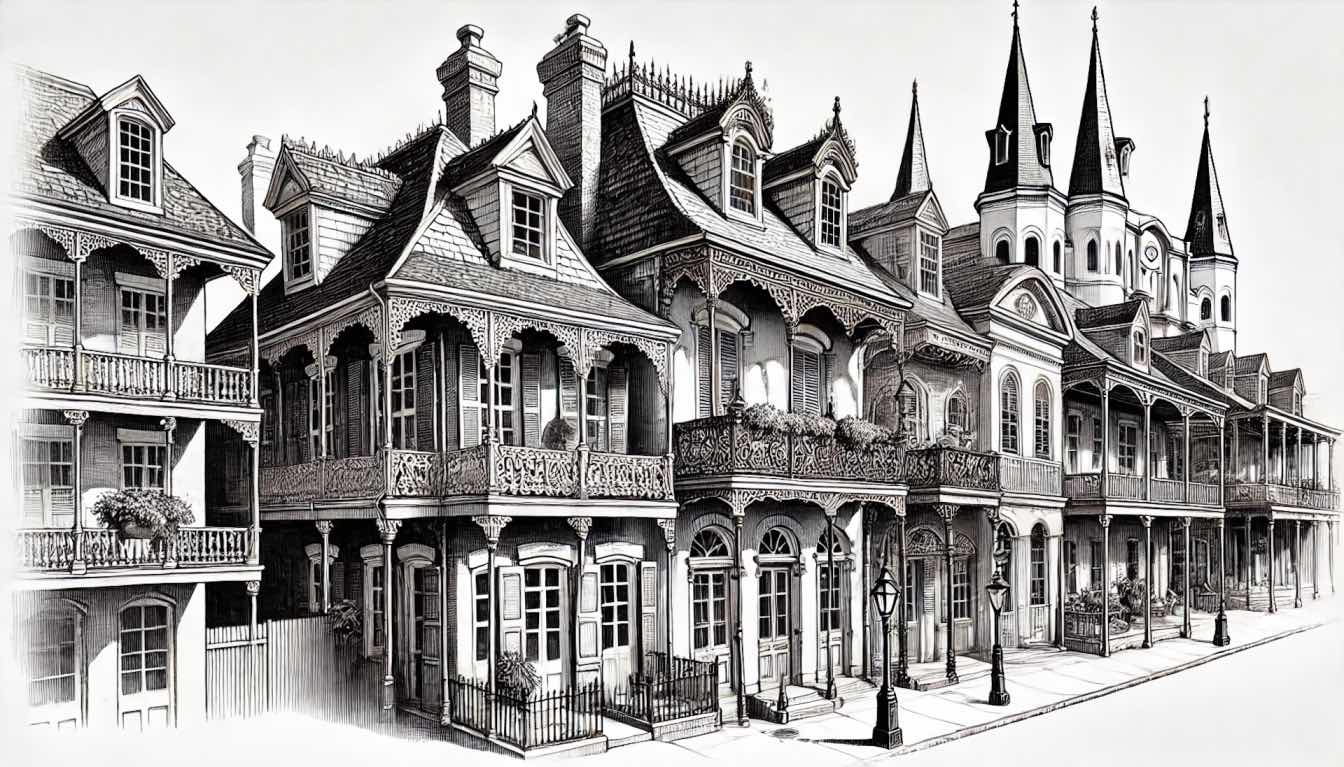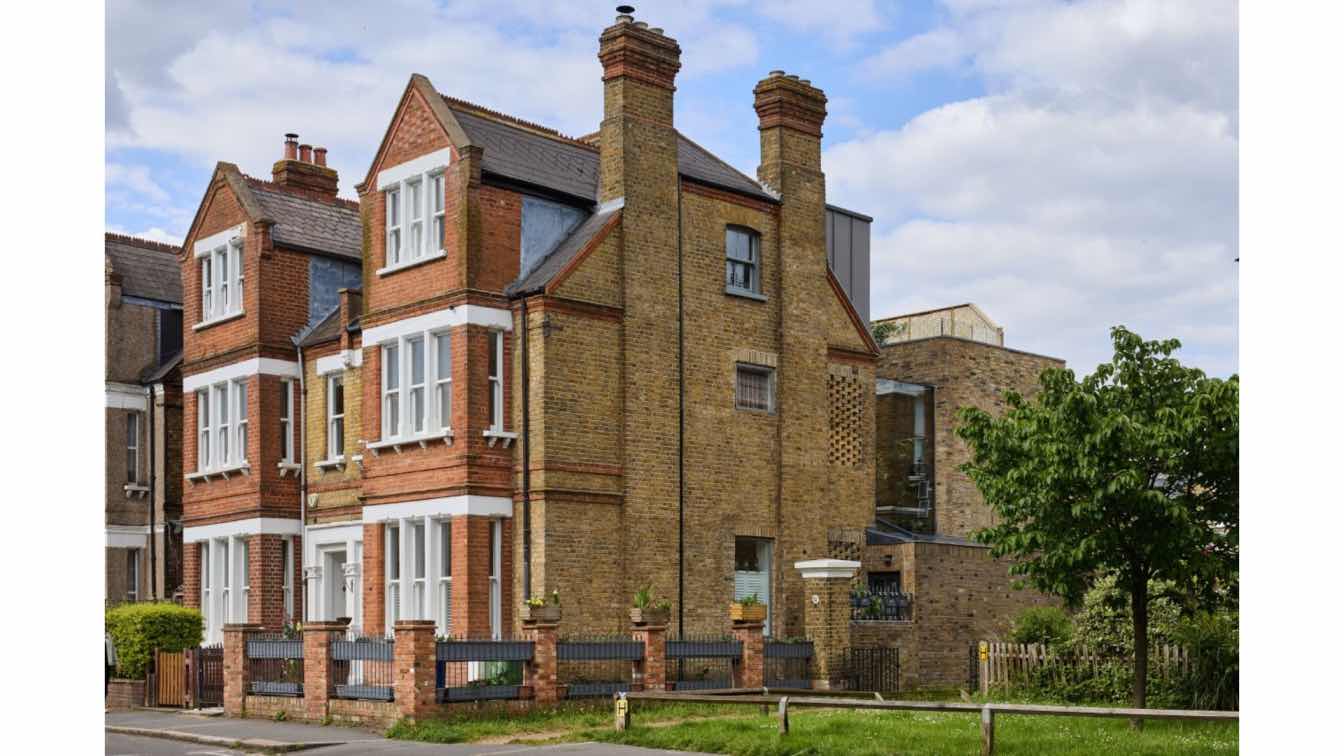The architectural design of New Orleans' roofs is a combination of functionality, aesthetics, and history. Ideally, any roof shape is a distillation of the city's diverse cultural and ethnic history and its capacity to withstand a difficult environment. Let’s delve deeper into the details of New Orleans’ iconic roofs and their significance.
The Hipped Roof: A Functional Masterpiece
Hip roofs, an architectural feature typical of Creole townhouses and other historical buildings, confirm the influence of the French architectural tradition. Roofs are all sideship with a pyramid shape and very good water dislodging ability, which is a very essential in the city which is suffering from heavy rainfalls and tropical storms.
Materials Used: Historically, the roofs were invariably tiled with slate, a durable and aesthetic material. At present, the more fashionable hipped roofs are retrofitted with synthetic slate roof coverings or metal roofing with a historic appearance but with much improved resistance to weathering.
Cultural Importance: And these roofs go beyond a simple matter of functionality but they are also at the core of the Creole style, where utility and ornamentation come together to define New Orleans style.
The Charm of Creole Cottage Roofs
They protect walls from rain, give shade, and give the house a warm, lovely look.
Roof Types: Gabled roofs are simple in form and cheaply to build. Rainwater from the roof is collected from the house, thus it is very adapted to the wet climate of the city.
Materials: Initially, these roofs were completely covered with shutters of wood, and then replaced with slates or with asphalt shingles to guarantee the highest structural and easiest maintenance.
Shotgun Houses: Narrow Homes, Iconic Rooflines
The shotgun house is a small, long rectangular, through-floor plan residential building, and has the following features, it is built for the spatial distribution of urban density. Roofs of these houses are different, but are most often in the form of gabled or hipped style.
Roof Extensions: Due to their long eave or front porch shotgun houses have one more layer of protection and grace?
Modern Touches: Metal roofing has been attractive in these homes, as decorative historical value intersects with modern capability to weather gulf coast conditions.
Mansard Roofs: French Sophistication in New Orleans
The Mansard roof, with its steep intermediate slope and horizontal shell roofing, is a recognizable architectural feature for which there is no unusual place in larger houses and older structures in New Orleans roofers. That design which became the vogue in France in the 17th century has come to Louisiana in the French colonial period.
Slate Roofs: Mansard roofs are almost always clad with slate tiles, due to their elegance and durability. These roofs offer lofts with floor space in the attic, a clever, urban elegant solution for urban architectural houses.
Visual Impact: To the cityscape, the Mansard roof provides a dignified scale there, unifying in a way the practical and utility dimensions.
Terracotta and Clay Tiles: Spanish Resilience
The terracotta and clay tile roofs are a characteristic feature of the historical neighborhoods in the region as a legacy of Spanish presence. Since they were fireproof they were a widely used option when wooden buildings were the norm of the day.
Longevity: These tiles can last more than 100 years with adequate maintenance, so they constitute a sustainable solution for roofing.
Historic Appeal: Repair or maintenance of a clay tile roof may preserve the historic character and vernacular in a great number of Spanish-style houses and public buildings.
Flat Roofs: A Practical Urban Choice
In the newer, more urbanized portions of roofing New Orleans, flat roofs are ubiquitous. Although less visually striking than other formats it is data with practical applications in using the limited amount of floor space available in small plots.
Green Roofing: The growing use of green roofs, in which plant life is grown over flat roofs, with the purpose of increasing insulation and decreasing stormwater runoff, is a modern adaptation of the idea of living sustainability.
Protecting New Orleans’ Roof Legacy
Roofing in New Orleans is of course more than just repairing or replacing roofs, it is more about protecting an integral part of the city's character. Here’s how local roofers are stepping up:
1. Historical Restoration: Roofers experienced in historical building restoration work with slate, copper and terracotta are used to restore the original aesthetic of houses and structures.
2. Hurricane-Resistant Solutions: New Orleans roofing professionals use contemporary technologies (e.g., reinforced metal roofs or hurricane straps) to guarantee that structures are able to withstand extreme weather conditions without undermining historic character.
3. Sustainable Roofing: Solar cells, cool roofs, and reflective coatings are the latest innovations, offering environmental impact reduction that preserves the traditional esthetic feel.
Why Roofs Matter in New Orleans
Every roof over in New Orleans has a story to tell, stories of the city's strength, and of its rich cultural heritage. The different styles offer not only the beauty, but the protection they need against the individual environment challenges of the Gulf Coast climate. Whether you’re admiring the steep angles of a Mansard roof or the simplicity of a Creole cottage, these structures embody the spirit of the Crescent City.
New Orleans roofing contractors familiar with repair and restoration can assure both the history and useability of the roof to homeowners. Whether it is historic home restoration or contemporary house remodeling, roof craft workers in New Orleans are part and parcel in keeping the city's architectural tradition alive.





